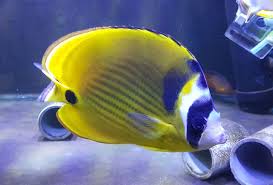
Dyed hair, particularly in vibrant and unconventional colors, has become a prominent and widely embraced trend in contemporary fashion and self-expression. To understand the roots of this trend, let’s explore its origins and historical development.
**1. Ancient Origins:**
The practice of dyeing hair dates back thousands of years to ancient civilizations. Various cultures used natural substances like henna, indigo, and plant extracts to color their hair. These early hair colorings often held cultural or symbolic significance.
**2. Modern Revival:**
Hair dyeing experienced a resurgence in popularity during the 20th century. In the 1950s, vibrant pastel and neon shades began to emerge as fashion statements. Celebrities and musicians like Elvis Presley and Little Richard embraced colorful hair, paving the way for the trend’s growth.
**3. Counterculture Movements:**
The 1960s and 1970s saw the rise of counterculture movements, with individuals expressing themselves through colorful hairstyles. The hippie movement, for instance, promoted vibrant, free-spirited hair colors as a symbol of rebellion against societal norms.
**4. Punk and New Wave:**
The punk and new wave movements of the late 1970s and early 1980s further propelled dyed hair into the mainstream. Vivid, unconventional colors, and punk-inspired hairstyles became iconic fashion statements.
**5. Pop Culture Influence:**
Television, film, and music have played a significant role in popularizing colorful dyed hair. Icons like Cyndi Lauper, Madonna, and David Bowie made vibrant hair a defining element of their personas.
**6. Contemporary Expression:**
In the 21st century, colorful dyed hair has transcended gender, age, and cultural boundaries. It has become a symbol of personal expression and creativity. Social media platforms have enabled individuals to share their unique hairstyles, further fueling the trend’s popularity.
**7. Cultural Significance:**
Different cultures around the world have incorporated colorful hair as part of traditional celebrations and rituals. For example, in India, the festival of Holi involves the playful application of vibrant colored powders to the hair and body.
**8. Empowerment and Self-Expression:**
Today, people of all backgrounds choose colorful dyed hair as a form of empowerment and self-expression. It allows individuals to break free from societal norms and embrace their unique identities.
**9. Acceptance and Inclusion:**
The acceptance of colorful dyed hair has contributed to a more inclusive society that celebrates diversity and individuality. It challenges conventional beauty standards and encourages people to be authentic.
**10. Conclusion:**
The history of colorful dyed hair is a testament to humanity’s enduring desire for self-expression and individuality. From ancient traditions to contemporary trends, the evolution of hair coloring reflects our ever-changing relationship with fashion, culture, and personal identity. In today’s world, it serves as a vibrant canvas for self-expression and a celebration of diversity.









